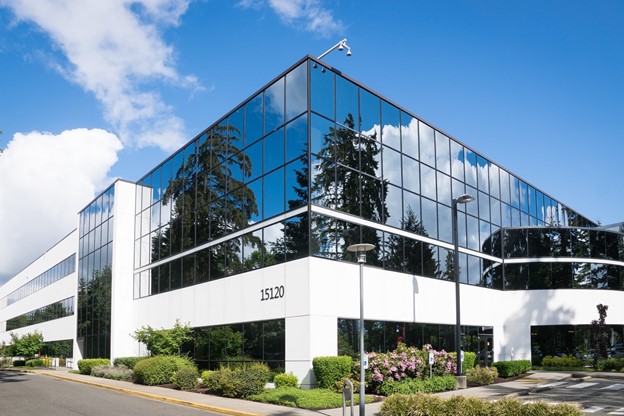5 Important Considerations When Designing a Medical Building

Article by: Roger Marx, Innovative Building Materials
Designing a medical building requires different considerations than just any commercial building because of standard regulations and attention to patient privacy and safety. Here are five important considerations when designing a medical facility:
1. Sound Barriers
When designing a medical building, it is important to consider patient privacy in general. However, one thing that is not often thought about is the acoustics of the space. To have private conversations with patients, you’ll need to implement some things into the design to absorb sound so that it doesn’t carry to other exam rooms.
Flat roof insulation
Using flat roof insulation can be suitable both environmentally and for acoustics. Not having a pitched room allows less space for sound to travel. Flat roof insulation immediately absorbs sound when it hits it. If you have a pitched roof, you’ll need to ensure that you lay a layer of insulation flat so that sound does not carry.
White ceiling tiles
Those white ceiling tiles that you often see in offices and medical buildings serve a purpose. They are made of a soft material, so they act as a sound barrier. If the ceiling is just sheetrock, sound bounces right off of it and carries throughout the building.
2. Cleanliness

Above all, every surface in the medical field has to be not only durable but quickly disinfected and cleaned. You don’t want cross-contamination between patients. You want to create sterility if you need to and provide a clean space overall for patient safety, not to mention the regulatory bodies.
Flooring
One of the places medical offices often go wrong in terms of cleanliness is in the flooring. Many will choose vinyl or tile. However, the problem with vinyl is that it doesn’t hold up very long to rigorous cleaning schedules. Tile ends up with grout lines that can’t be easily cleaned. As an alternative, try stained concrete floors. They are one of the easiest floorings to clean and will hold up over time to repeated cleaning and heavy traffic. Not to mention, they still look nice!
Finishings
Think about every interior finishing, from the paint on the walls to counter surfaces and storage. Anything in a medical building is liable to get contaminated with blood or body fluids and must be easily cleaned. Pick finishings that can easily be wiped down with a multitude of cleaning solutions. For any fabric finishings like curtains that may be necessary, make sure they can be washed. However, you’ll especially want to avoid any fabric furnishings in areas of patient contact. For instance, chairs in the exam room should not be bolstered fabric unless it is vinyl that can be wiped down.
3. Accessibility

Think about the demographic of people that will be visiting a medical building. The sick and injured to the elderly, and everyone in between, will need to enter and maneuver through the building. This means you should consider accessibility.
Ramps
Having a flat entranceway is crucial for accessibility purposes. If you are going to put stairs, be sure to include a ramp conducive to a wheelchair. Don’t make it so steep that someone wouldn’t be able to roll themselves up against it. Keep in mind that not everyone has help with them when they are visiting a medical building. Try to keep your entranceway flat, but if necessary, include an ADA-compliant ramp with handrails.
Doorways
Keep in mind that there will be people of all sizes in the medical building, so ensure that you make doorways both wide and tall. People will also need to be able to get wheelchairs, walkers, or crutches through every door.
4. Spacing

It always seems like it is most cost-effective to make exam rooms small. After all, you think that it will just be two people in the room. However, you have to consider that some people will need to bring aides with them or have wheelchairs or walkers. Also, you may need to do procedures that will require assistance from support staff and enough room to maintain a sterile field. Another spacing concept to consider is the hallways, especially around corners. If an emergency occurs, EMS will need to maneuver a stretcher through the halls, into rooms, and around corners. Also, wheelchairs and walkers have to be maneuverable.
Bathrooms
Consider accessibility in the restrooms. Everyone will need to be able to use it and wash their hands. Consider lower sitting sinks, toilets, and handles to make the restroom more accessible.
5. Operations
Like any business, healthcare requires an efficient and smooth day-to-day operation to ensure proper and prompt patient care. When designing a medical building, make sure that you include space for everything you need and a layout conducive to your operations. If your doctors have to walk across the building from their workstation to see a patient, then you’re lagging a lot of efficiencies.
Similarly, you shouldn’t put a staff break room next to a patient care area as food is not allowed in patient care areas, and you want to keep administration separate from patient care. If you are expecting many deliveries of supplies, a different door might be helpful so that they don’t have to bring stacks of boxes through your waiting or patient care areas.
Roger Marx is a contributor to the Innovative Building Materials blog. He is a content writer for the construction and home improvement industries with an interest in landscaping, outdoor remodeling, and home renovation. Roger is focused on educating homeowners, contractors, and architects on innovative materials and methods of construction that increase property value and improve sustainability.
